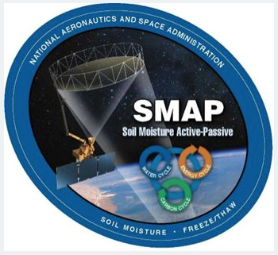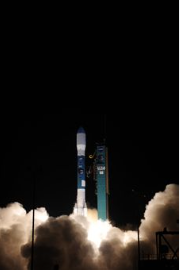

A United Launch Alliance Delta II rocket successfully launches from Vandenberg Air Force Base Space Launch Complex-2, Jan. 31, 2015 at 6:22 a.m. PDT. This Delta II rocket carried NASA's Soil Moisture Active Passive; the first Earth observing satellite. SMAP is designed to collect global observations of surface soil moisture and its freeze/thaw state. High resolution space-based measurements of soil moisture and whether the soil is frozen or thawed will give scientists a new capability to observe and predict natural hazards of extreme weather, climate change, floods and droughts, and will help reduce uncertainties in the understanding of Earth's water and carbon cycles. (U.S. Air Force photo by Joe Davila)
[SatNews] The Space and Missile Systems Center's Range and Network Systems Division and its government team delivered two new weather operating systems that supported the 30th Space Wing during the successful launch of NASA's Soil Moisture Active Passive (SMAP) satellite. This was the first launch that used these new systems.
The Automated Meteorological Profiling System (AMPS) provides accurate, high-resolution profiles of wind and thermodynamic parameters from the ground up to 30 kilometers. An instrument package aboard a weather balloon sends GPS data, temperature sensor measurements and humidity measurements to AMPS, which processes the raw data into wind and thermodynamic profiles. The secure real-time data is then transmitted to users via the External User Interface (XUI). This data is used to calculate the upper level wind vehicle control and load margins.
Both AMPS and XUI are an improvement over the legacy systems, which could only process information from a few balloons simultaneously. With the new systems, more than a dozen balloons can be released sending more data to users. Tracking winds is important to make sure the launch vehicle has a clear path to blast into space. Additionally, the new system features improved transmitted data security, and increased equipment reliability and launch safety.
During the SMAP launch, the 30th Operations Support Squadron released 15 weather balloons over the course of the countdown. The AMPS/XUI systems were able to process data from ten balloons at once and securely transmit real-time data to the user allowing access to the most up-to-date weather data. This real-time access was critical in enabling the launch team to analyze the latest balloon data and make a "Go for Launch" call with only ten minutes remaining in the countdown. The launch window was only three minutes long—so timing the launch with favorable winds was critical.
NASA's SMAP satellite will provide global, high-resolution mapping of soil moisture and its freeze/thaw state to help scientists better understand the Earth's water and carbon cycles and to develop improved flood and drought predictions.

